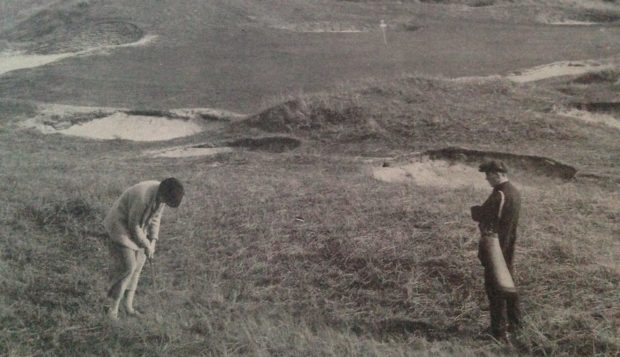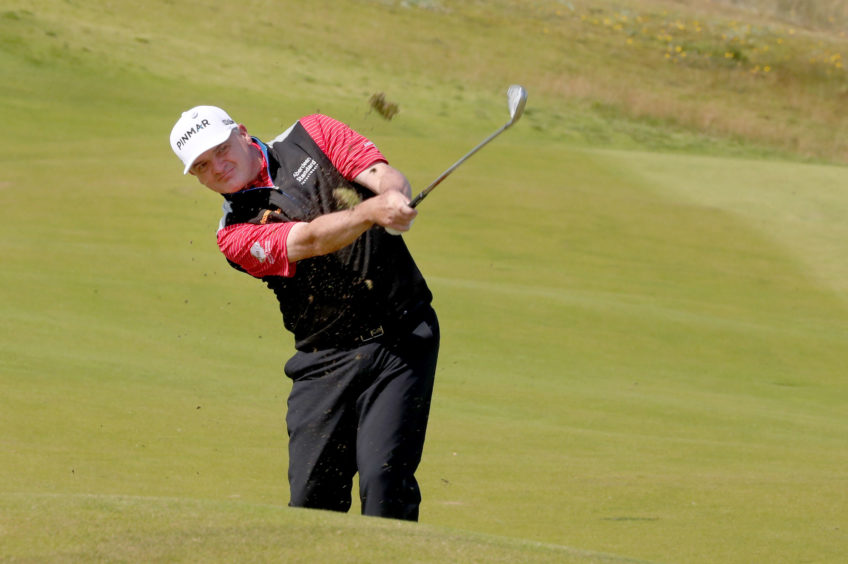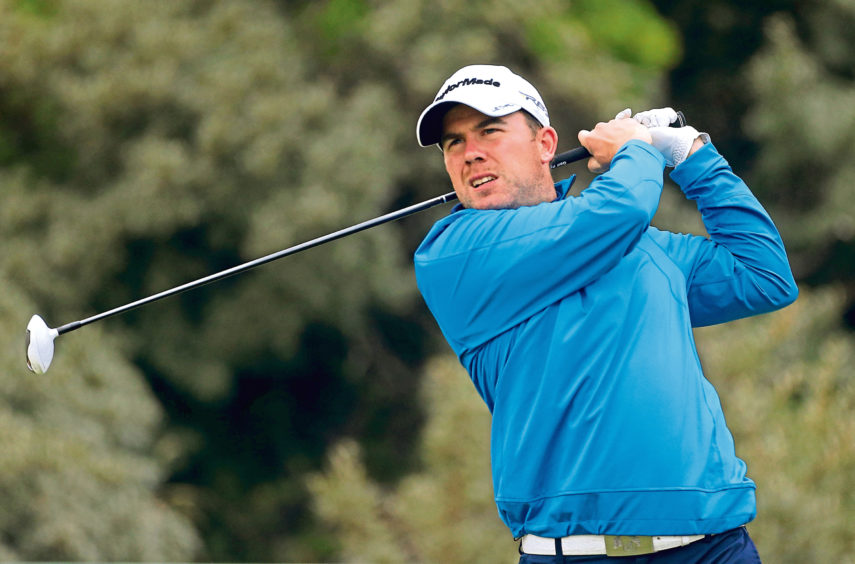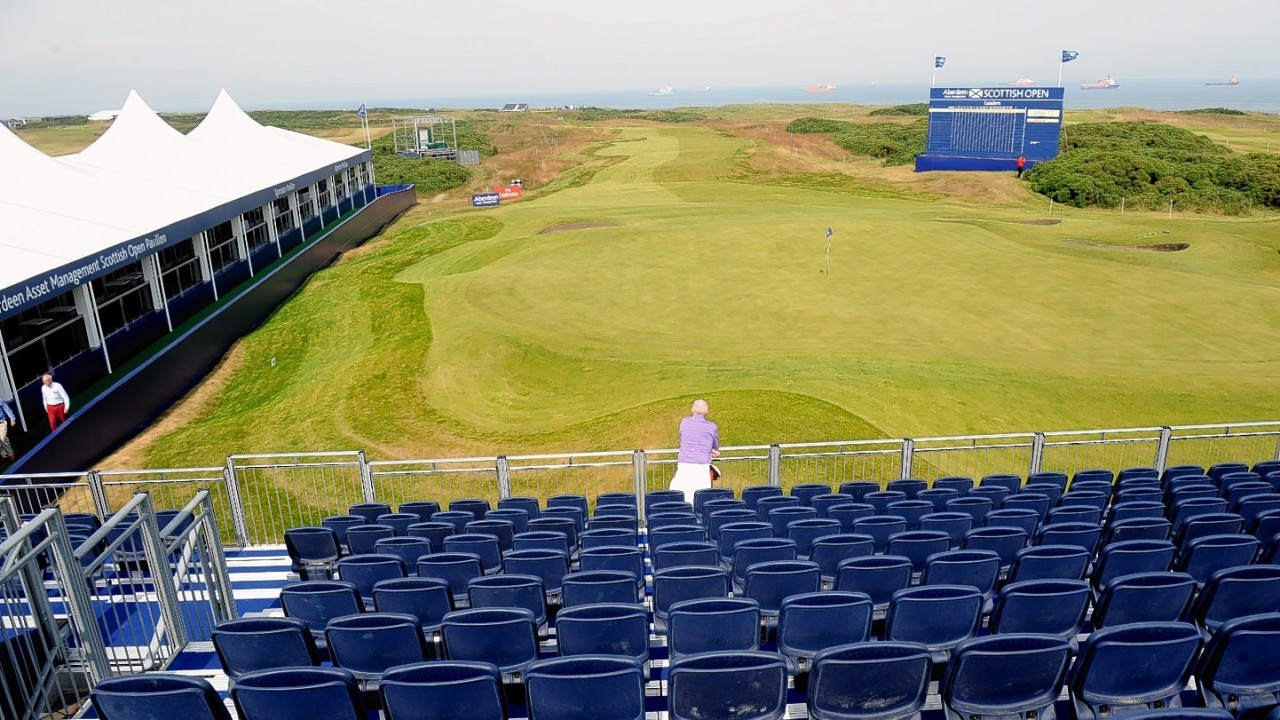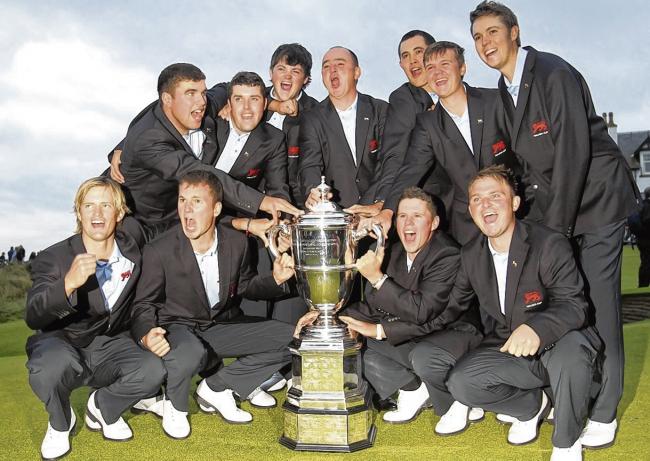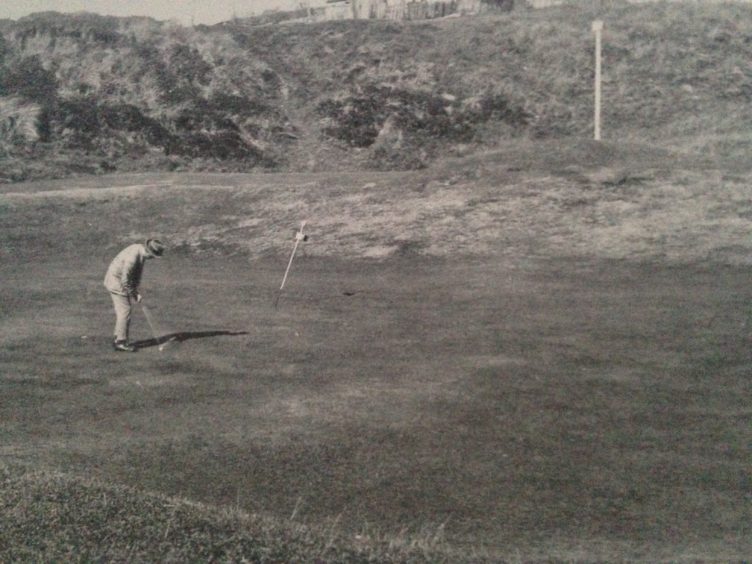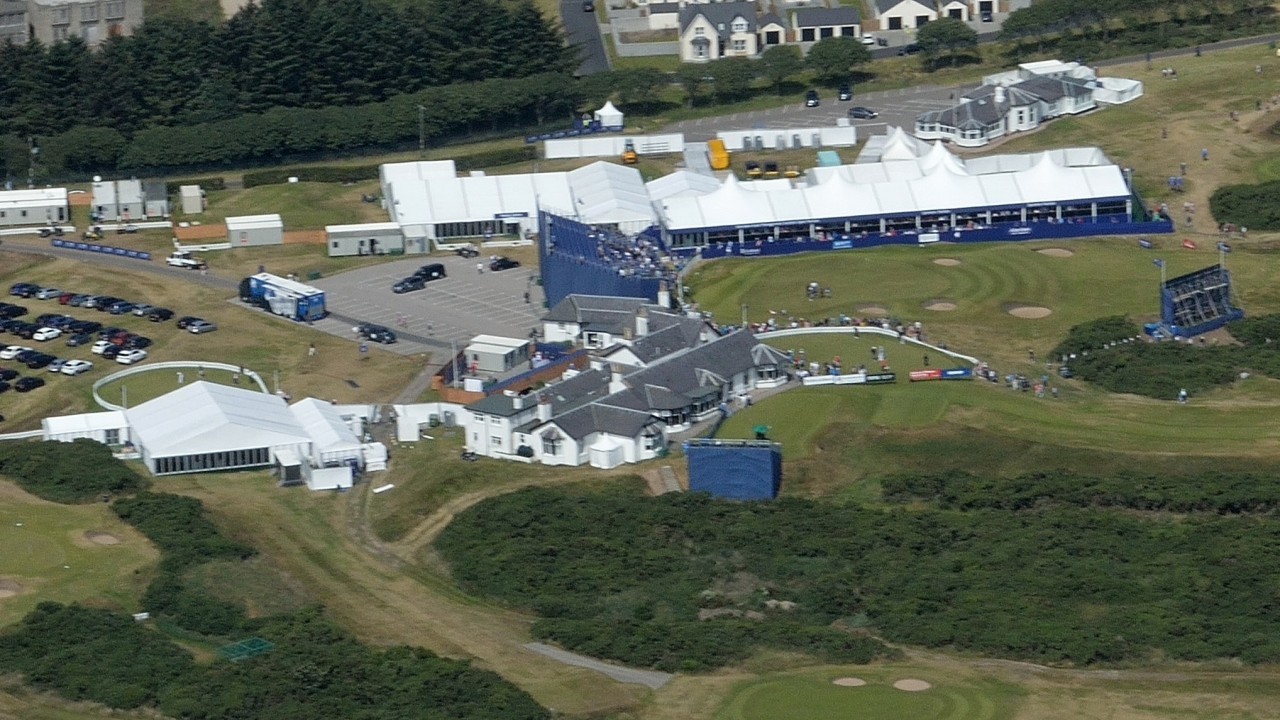It’s one of the most resplendent fairways to heaven in the golfing realm with a history dating all the way back to the 18th century.
And, even as the sport makes a return from the lockdown induced by the Covid-19 pandemic, Royal Aberdeen, the sixth oldest golf club in the world, is celebrating its 240th anniversary by providing a snapshot of its rich history and tradition of attracting many of the greatest names in the pantheon through its doors.
Open legend
At the start of this week, the 1999 Open champion, Paul Lawrie, whose triumph at Carnoustie is indelibly etched in golfing lore, was among the first members to pick up his clubs and enjoy the sunshine at Royal Aberdeen in the company of his son, Craig.
Just another illustrious visitor to what is a majestic setting close to the North Sea.
Lawrie was following in the footsteps of other luminaries of the game who have graced the Granite City while performing in some of golf’s most prestigious competitions.
Another beautiful morning for a game @RoyalAberdeenPS @CraigLawrie95 pic.twitter.com/PSsOcsyhK6
— Paul Lawrie (@PaulLawriegolf) June 1, 2020
Just consider, for instance, a few of the exalted names who participated in the British Senior Open at the north-east venue in 2005; a list which features a triumvirate of Open champions, Tom Watson, Gary Player and Greg Norman, who locked horms with other Major winners of the calibre of Tom Kite and Craig Stadler.
The club also boasts a former US Amateur champion as a member.
Richie Ramsay, born in Aberdeen and former junior member at Royal Aberdeen Golf Club, became an honorary member in September 2006 in recognition of his golfing achievements after representing Great Britain and Ireland in the 2005 Walker Cup and, in 2006, becoming the first British golfer in almost a century to win the US Amateur Championship.
Ramsay turned professional in 2007 and played two seasons on the Challenge Tour before securing his card for the European Tour and winning three times.
No wonder the Balgownie setting has prompted such lavish praise, especially for its front nine holes which some visitors have described as “the best in Britain”.
Founded in 1780, it has been established at its current location since 1888.
The course was originally designed by Archie Simpson and Robert Simpson, but the amenities were later re-bunkered and lengthened to its current layout by James Braid.
Throughout the past 132 years, the course has been subject to regular modification and improvement, with the aim of ensuring that it continues to be the highest quality.
Global visitors
In the process, the Balgownie links has become firmly established in the top 25 in the UK and recently moved up five places to hold the 52nd spot in the world rankings, having gained plaudits from visitors throughout the globe.
Its ‘royal’ patronage was awarded by Edward VII in 1903 and the course’s reputation has only been enhanced during the last century.
The renowned golf writer, Bernard Darwin, once said: “It represented a huge gap in my golfing education not to have played Balgownie until now, because it is much more than a good golf course, it is a noble links!”
This is an undoubted success story.
But the club’s historian, Roger Laird, spoke about the initial teething problems suffered at the original site – including everything from horse racing meetings to fisher folk drying their nets – which eventually persuaded the members to relocate to their present home.
He explained: “The records show that golf in Aberdeen originated on the Queens Links, in the area around the Broad Hill.
“This area was designated as Common Land and was made over by the Crown to the Town Council for the recreation of the people in the city.
“The Society of Golfers at Aberdeen was formed in 1780, although golf had begun on the links long before that time.
“Golfing life continued on the links for the next hundred years or so, but it did suffer from a range of intermittent interruptions.
“At various times over the years, archery, football and cricket took place on the links, which interfered with the golf.
“Further disruption occurred between 1815 and 1833 when Aberdeen Racecourse promoters organised horse racing on the golf course.
“Then, in 1843, herring fishers came along and started spreading and drying their nets at the site.
“Worse was to come in 1877 when the Town Council decided that the Queens Links required levelling, and some of the more picturesque features on the original course were removed.
“There was further friction between the club and the council in 1877, as a result of the lengthy closure of the course for the Highland & Agricultural Society’s annual show.
“This combination of competing interests on the original golf course eventually led the club to decide – in 1886 – to lay out a course on the waste ground to the north of the River Don, on the estate of Mr Forbes of Balgownie.
“Two years later, in 1888, work on the laying out commenced, and the club has resided happily here ever since.”
The stars come out to play at Royal Aberdeen
These improvements have been the catalyst for a series of illustrious tournaments to be staged at Royal Aberdeen over the years.
The list includes the Senior British Open in 2005, the Scottish Boys Championship in 2009, the Walker Cup in 2011 – which featured American star Jordan Spieth – and the Scottish Open in 2014.
The latter tournament, which was won by England’s Justin Rose – another major champion – drew one of the strongest-ever fields to the region.
And Rory McIlroy made the headlines on the opening day when he broke the course record with a seven-under-par 64.
His heroics gained plenty of attention, but wherever you looked, the arena was littered with stellar figures, including Phil Mickelson, Lee Westwood, Padraig Harrington, Luke Donald, Tommy Fleetwood and Jose Maria Olazabal.
And the size of the galleries testified to the interest in the sport, both within Aberdeen and Aberdeenshire, but those who ventured from as far afield as the US and Japan.
The early tussles which attracted big crowds
Mr Laird confirmed that Royal Aberdeen has also played host to a series of challenge matches which have taken place over many years.
He pinpointed a few of the most intriguing contests, stretching all the way back to the 1930s to emphasise the range of A-listers who have teed up at Balgownie.
He said: “In 1933, Walter Hagen and Denmore Shute came up against David Houston and Jack McLean. They attracted a crowd of 1,300 people.
“Then, in 1938, (three-time Open champion) Henry Cotton and Jimmy Adams took on Willie Crockett and George Leiper.
“After the Second World War, (four-time Open champion) Bobby Locke was up against John Panton. And the pair attracted a crowd of 1,500.
“Then, in 1966, the Scottish duo, Eric Brown and Harry Bannerman were pitted against Tony Lema and Peter Alliss.”
The latter has become famous (or notorious, depending on your viewpoint) for his non-PC remarks, while his commentary on the dramatic collapse of Jean van de Velde at Carnoustie in 1999 – which eventually paved the way for Paul Lawrie to collect the Claret Jug – has become the stuff of legend.
But whenever he has visited Royal Aberdeen, Alliss has been in wonderland.
Royal Aberdeen is taking steps to tackle coastal erosion
As with many links courses throughout the UK, Royal Aberdeen faces the challenge of coastal erosion which is threatening to impact some parts of its impressive front nine.
In order to mitigate the effects of erosion and preserve their world-renowned championship course which plays a key role in driving tourism to the Granite City the club has commissioned a report from specialist consultants.
This involves consulting and partnering with other stakeholders to investigate what solutions are available to preserve the Balgownie links for future generations.
